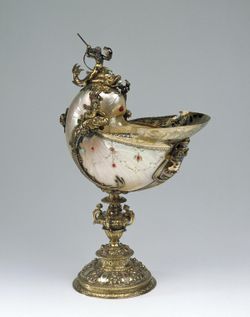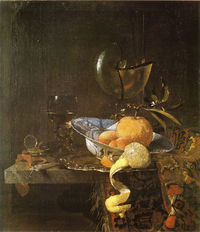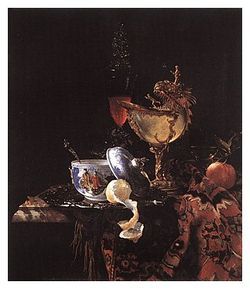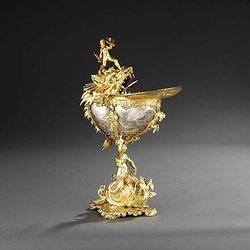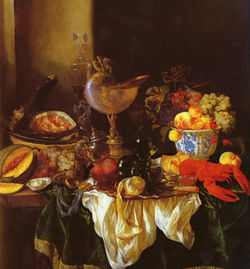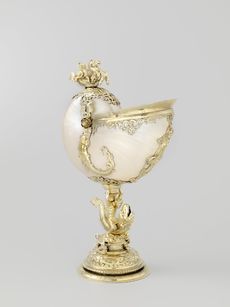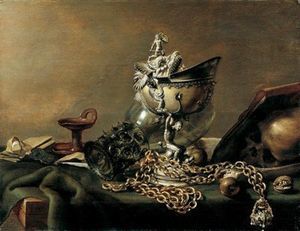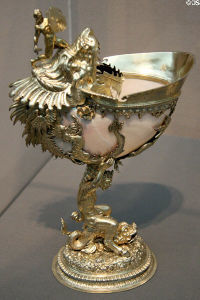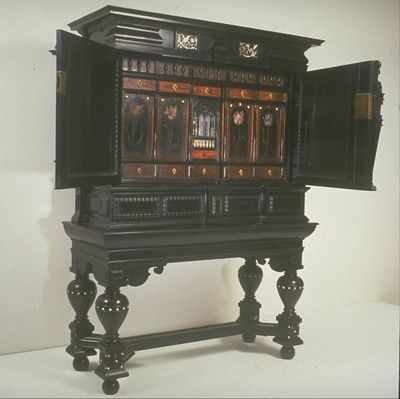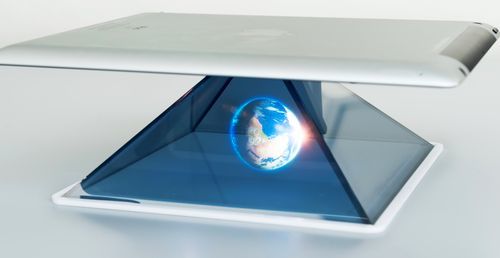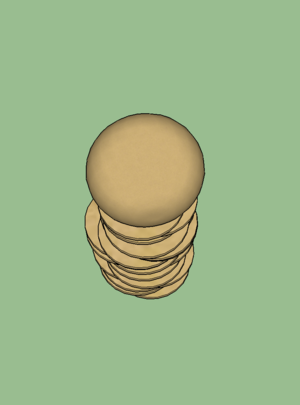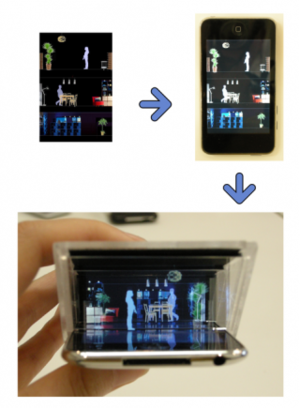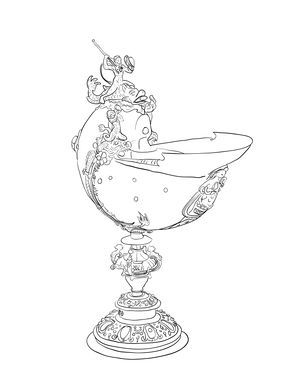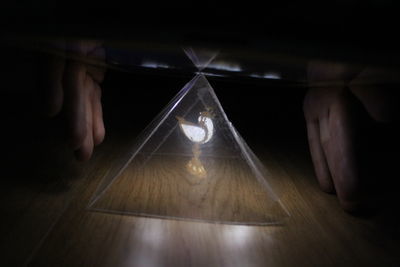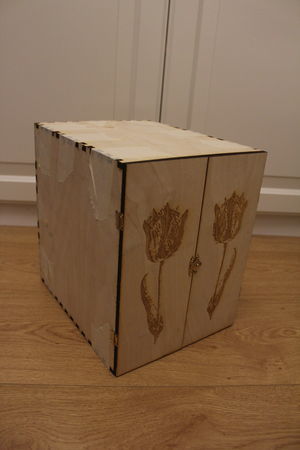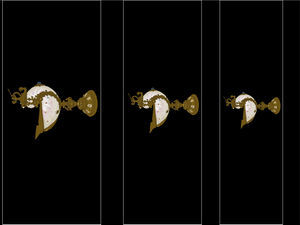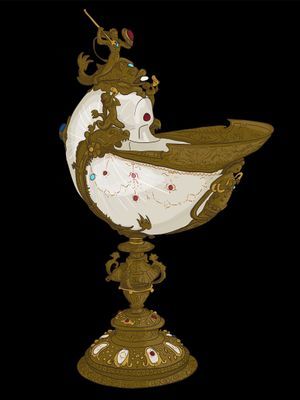Difference between revisions of "User:N.Everts"
| Line 59: | Line 59: | ||
===Replica with different technique / material=== | ===Replica with different technique / material=== | ||
Modern illustration of the nautilus beaker, using Illustration and Wacom | Modern illustration of the nautilus beaker, using Illustration and Wacom | ||
| − | (in | + | (in progress) |
[[File:Nautilus_beker-01.jpg|300px]] | [[File:Nautilus_beker-01.jpg|300px]] | ||
| + | |||
| + | I wanted to created a hologram using illustratons form all 4 sides of the object. | ||
| + | |||
| + | [[File:IMG_2005.JPG|400px]] | ||
| + | |||
| + | Though I had trouble with the light presenting my project during daytime. So I thought of a way to still be have the hologram clearly visible despite the amount of light in the room. I recreated a modern version of the cabinet of curiosities in which I could present the hologram. | ||
| + | |||
| + | [[File:IMG_2009.JPG|300px]] | ||
| + | |||
| + | I tried to create more depth by using the i3DG technic but the images came out to small and barely visible to I decides just to use 1 layer. | ||
| + | |||
[[File:ipad_image1.jpg|300px]] | [[File:ipad_image1.jpg|300px]] | ||
[[File:ipad_image_af-01.jpg|300px]] | [[File:ipad_image_af-01.jpg|300px]] | ||
Revision as of 21:50, 28 September 2014
Contents
Workshop
Project 1
As inspiration for my first project I took the nautilus beaker. It is made of nautilus shell, silver, gilting, mother-of-pearl and precious stones. I chose it because of the details. The use of natural materials and metals is rather intriguing, especially considering the era it's made in. It really looks like a prop from a fantasy movie of something along those lines.
Reseach
Beaker and Paintings
This beaker isn't the only one in existence though. There are quite a few others dating from the same era. The cups most likely originated from The Netherlands as most of them have the signs of either Rotterdam or Amsterdam or Delft on them. Though there are also a few pieces with marks from German. They are seen as pieces of art rather then just object because of their architectural earth. Een Hollandse Nautilusbeker, Th. M. Duyvené de Wit-Klinkhamer Another thing that is quite interesting is the fact that the beakers appear in a few still life paintings dating from the renaissance. Most of them painted by Dutch painters, like for example Abraham van Beyeren and Willem Kalf. Though the paintings look a lot like the really cups but they are not completely identical.
A painting by Pieter Claesz is the only painting with which I was able to find a beaker that was almost completely identical though still isn’t a 100% the same.
Cabinets of Curiosities
Nautilus cups were (and continue to be) among the most prestigious trophy objects within silver collections, and as such they were frequently represented in still life paintings, such as those by Willem Claesz. Heda (Dutch, 1594 – c. 1670). But they are particularly representative of the objects collected in the Renaissance ‘cabinets ofcuriosities,’ a type of collection, which is an important forerunner of the modern museum as an institution. Striving to put together the rarest and most exotic, wondrous products of nature with the most astonishing accomplishments of human inventiveness and dexterity, that is of naturalia and artificialia as they were called at the time, princes and the richest merchants of the 16th and 17th centuries put together the first large collections of zoological, botanical, and mineralogical specimens blended with the most exquisite works of art. These “cabinets of curiosities” were also known as Kunst- und Wunderkammern (“chambers of art and wonder”). They first emerged in the territory of the Holy Roman Empire and in central Europe, before spreading throughout the remainder of the continent. By combining natura and artificium in a single work, Nautilus cups can be seen as pars pro toto embodiments of the very concept of collecting that informed the “cabinets of curiosities” at large. Artsjournal
Inspiration
HOLHO
This is a device that lets you create holograms using a phone or tablet. The hologram is created by the 4 sides that reflected image, creating the illusion that the projected image is inside of the device. HOLHO
i3DG by Jitsuro Mase
i3DG is a playful analog extension to an iPhone or an iPodTouch, converting its 2D display into a layered 3D view. Using the old technique of placing a half-silvered mirror at a 45-degree angle in front of an image, in a new context, the project extends upon 3D displays and iPhones. As a peripheral gadget, i3DG can support a wide range of different applications, from 3D videos and animations to accelerometer-based games. i3DG
Replica with different technique / material
Modern illustration of the nautilus beaker, using Illustration and Wacom (in progress)
I wanted to created a hologram using illustratons form all 4 sides of the object.
Though I had trouble with the light presenting my project during daytime. So I thought of a way to still be have the hologram clearly visible despite the amount of light in the room. I recreated a modern version of the cabinet of curiosities in which I could present the hologram.
I tried to create more depth by using the i3DG technic but the images came out to small and barely visible to I decides just to use 1 layer.
Project 2
Insperation
Hermit Crab Shell by Aki Inomata
The idea I came up with was inspired by a work I had seen recently by the Japanese artist Aki Inomata. For this work she 3D printed shells for hermit crabs using a clear plastic. She decorated the tops of the shells with architectural sceneries inspired by places all over the world. Aki Inomata
